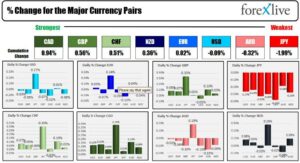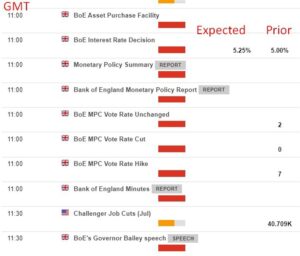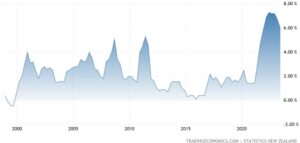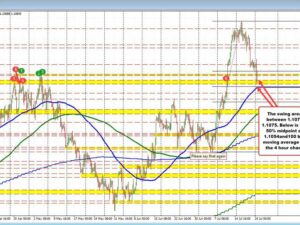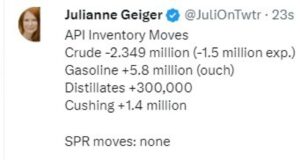
1) House prices
Eight weeks ago, we might be having a very different conversation about Canadian housing. Yields were rising and central banks were offering no hints about cutting rates. Pain was certainly in the pipeline and a hard housing landing in the spring was likely.
Skip ahead and the Government of Canada five year has fallen to 3.20% from almost 4.50%. That 130 basis points will feed directly into housing. Notably though It looked like it would be the year of a housing reckoning but now it looks like the year of rate relief.
Canada has about $1.75 trillion in mortgage debt outstanding with about $250 billion coming up for renewal in 2024, with another $352 billion in 2025. Every 100 basis points is taking $17.5 billion in annual spending out of the economy plus all the multipliers on that. Compare that to around $67 billion in monthly retail sales and it's material.
But it may be the wealth effect that's more impactful. Going back to the start of 2023, the question then was, if housing prices fell 20% (which was merely back to 2021 levels) would consumers recoil. The answer was that they largely didn't.
I wouldn't take for granted that the same thing happens if prices continue down to 2019 levels or lower. At some point there is a drag and it should be noted that in mid-1990 when the Bank of Canada began to cut rates from 13% down to 5%, house prices continued to fall for two years.
Summing up, the housing market remains in a precarious state as there is something of a buyers' strike while sellers continue to hold out hope for high prices. If a flood of supply hits the spring market, it could easily crack the dam, even with 50-75 bps in BOC cuts in H1. Alternately, a hint at cuts could unleash the housing animal spirits again with buyers taking variable rates on the well-grounded belief that they will come down.
How that unfolds is key to the outlook for the economy but note that there is some reflexivity in play. If buyers balance out the market, the BOC is less likely to cut in 2024 and 2025 and vice versa. That has important knock-ons for the currency.
2) China
AI image
A key upside risk for Canada and the Canadian dollar is China. Sentiment surrounding China right now is ghastly, with many fund managers determining its univestible due to President Xi wanting to squeeze out housing excess and control tech companies. There's also a strong belief that a conflict in Taiwan is more a question of 'when' than 'if'.
At this point, I'd argue those worries are fully priced in. Chinese consumers have also been struggling coming out of covid and officials haven't taken strong steps to reverse that. The upside risk is that they will, and they have many levers to pull given zeroed out inflation in China. If so, it would flow through to Canada via commodity demand, boosting a sector that had a tough year in 2023.
For now, I'll file this under: I'll believe it when I see it, but it's a spot to watch.
3) OPEC
Angola quitting OPEC in December fanned the flames of the idea that OPEC is in an unsustainable position. They keep cutting output and US shale continues to hike to fill it. A tense December OPEC meeting eventually agreed to H1 cuts that should balance the market but all the risks are to the downside now, with further cuts unpalatable.
Eyes will be on market balances early in the year but it's seasonally the slowest time of year so inventory builds are possible. As the year progresses, OPEC needs to see deficits emerge, which they can fill by gradually increasing output. In time, rising demand should allow them to wind down spare capacity but if shale another 1 mbpd in the first half of the year, then they may have no choice but to start an ugly war for market share; crippling Canada's largest export just as TMX ramps up.
4) Inflation
Canada headline CPI y/y
The latest CPI was worrisome at 3.1% versus 2.9% expected and it came at the same time as inflation data undershot in most other advanced economies.
That miss should help to keep the Bank of Canada cautious at the January meeting but beyond that there is reason for optimism as easier y/y comps hit.
Two major sources of Canadian inflation right now are mortgage interest (which the BOC obviously controls) and rent (which is one of the toughest things for the BOC to affect). Scarcity of rental supply is something the BOC can't control but the central bank has a mandate for low and stable inflation and they won't tolerate high inflation, even if it's driven by rent. I'd certainly argue though that lower rates would be helpful in bringing on long-term housing supply but that won't be possible until they've restored credibility on low-and-stable inflation.
5) Consumer spending
This is a great chart from CIBC. It highlights how Canadian consumption has already slowed materially while in the US, demand for consumer goods has continued to rise.
US consumption will continue to benefit from low 30-year fixed mortgages while Canadian consumers will be hit with higher fixed-rate resets through 2026, even if the BOC cuts materially from here.
Ultimately, these are two consumer-driven economies and the winning currency will be largely driven by the winning consumer. The latest leg of Canadian dollar strength was all about pricing-out risks of a hard landing in the housing market -- you can see that in the banking equities and REITs. That trend may extend into early 2024 and take USD/CAD down to 1.30 (or CAD/USD 0.77) but to fuel further moves we will need to see positive outcomes from housing, the consumer, China or energy. Alternatively, a path lower for USD/CAD would be broader USD weakness on a softening American consumer and economy, though some of that is undoubtedly priced in already.
- SEO Powered Content & PR Distribution. Get Amplified Today.
- PlatoData.Network Vertical Generative Ai. Empower Yourself. Access Here.
- PlatoAiStream. Web3 Intelligence. Knowledge Amplified. Access Here.
- PlatoESG. Carbon, CleanTech, Energy, Environment, Solar, Waste Management. Access Here.
- PlatoHealth. Biotech and Clinical Trials Intelligence. Access Here.
- Source: https://www.forexlive.com/news/five-risks-for-the-canadian-dollar-in-2024-20231231/
- :has
- :is
- $UP
- 1
- 100
- 130
- 2019
- 2021
- 2023
- 2024
- 2025
- 2026
- 30
- 75
- 77
- a
- About
- advanced
- affect
- again
- ago
- agreed
- ahead
- All
- allow
- almost
- already
- also
- American
- an
- and
- animal
- annual
- Another
- answer
- ARE
- argue
- around
- AS
- At
- back
- Balance
- balances
- Bank
- bank of canada
- Banking
- Banks
- basis
- BE
- been
- began
- belief
- believe
- benefit
- Billion
- BoC
- boosting
- Bringing
- broader
- builds
- but
- buyers
- by
- came
- CAN
- Canada
- Canadian
- Canadian Dollar
- Canadian inflation
- Capacity
- cautious
- central
- Central Bank
- Central Banks
- certainly
- Chart
- China
- chinese
- choice
- CIBC
- come
- coming
- commodity
- Companies
- compare
- conflict
- consumer
- Consumers
- consumption
- continue
- continued
- continues
- control
- controls
- Conversation
- could
- Covid
- CPI
- crack
- Credibility
- crippling
- Currency
- Cut
- cuts
- cutting
- data
- Debt
- December
- Demand
- determining
- didn
- different
- directly
- Dollar
- down
- downside
- driven
- due
- Early
- easier
- easily
- economies
- economy
- effect
- emerge
- energy
- Equities
- Even
- eventually
- Every
- excess
- expected
- export
- extend
- Fall
- Fallen
- File
- fill
- First
- five
- fixed
- flood
- flow
- For
- from
- Fuel
- fully
- fund
- fund managers
- further
- given
- going
- goods
- Government
- gradually
- granted
- great
- had
- Half
- happens
- Hard
- Have
- haven
- having
- headline
- help
- helpful
- here
- High
- High inflation
- higher
- highlights
- Hike
- hints
- Hit
- Hits
- hold
- hope
- House
- housing
- housing market
- How
- HTTPS
- i
- idea
- if
- impactful
- important
- in
- increasing
- inflation
- interest
- into
- inventory
- IT
- ITS
- January
- jpg
- just
- Keep
- Key
- landing
- largely
- largest
- latest
- less
- levels
- like
- likely
- ll
- long-term
- looked
- LOOKS
- Low
- lower
- major
- Managers
- mandate
- many
- Market
- market share
- material
- materially
- May..
- meeting
- merely
- might
- miss
- monthly
- more
- Mortgage
- Mortgages
- most
- moves
- Need
- needs
- no
- notably
- note
- noted
- now
- of
- offering
- officials
- on
- ONE
- opec
- or
- Other
- out
- outcomes
- Outlook
- output
- outstanding
- Pain
- path
- pipeline
- plato
- Plato Data Intelligence
- PlatoData
- Play
- plus
- Point
- points
- position
- positive
- possible
- president
- Prices
- question
- Ramps
- Rate
- Rates
- reason
- Recoil
- relief
- remains
- Rent
- restored
- retail
- Retail Sales
- reverse
- right
- Rise
- rising
- Risk
- risks
- s
- sales
- same
- Scarcity
- sector
- see
- Sellers
- sentiment
- Shale
- Share
- should
- So
- some
- something
- Sources
- Spending
- Spot
- spring
- Squeeze
- stable
- start
- State
- Steps
- strength
- strike
- strong
- Struggling
- supply
- Surrounding
- T
- Taiwan
- Take
- taken
- taking
- tech
- tech companies
- than
- that
- The
- Them
- then
- There.
- These
- they
- thing
- things
- this
- those
- though?
- Through
- time
- to
- tough
- Trend
- Trillion
- two
- under
- undoubtedly
- unleash
- unsustainable
- until
- Upside
- us
- USD
- USD/CAD
- variable
- Ve
- Versus
- very
- via
- vice
- wanting
- war
- was
- Watch
- we
- weakness
- Wealth
- Weeks
- were
- when
- which
- while
- will
- wind
- winning
- with
- Won
- would
- wouldn
- xi
- year
- years
- yields
- you
- zephyrnet



